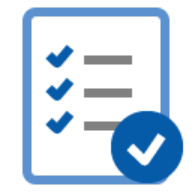
The pros and cons of different data types
What is Alternative Data?
Alternative data refers to the data which wasn’t available until recently in the area of finance and investing, such as POS data, credit card data, geolocation and satellite images. It is in contrast to traditional data, for example, financial statements and economic statistics.
In this article, we will explain the following 3 points from the viewpoint of investors who are going to use alternative data.
1. what kind of data is alternative data?
2. what pros and cons does each alternative data have?
3. how is alternative data used in practice?
Overview, Pros and Cons
In this section, we will explain an overview, a period (how long the data is used, long-term/short-term), pros, cons and popular data providers of each data.
Web Traffic & App Usage
This is data that describes the usage of web sites and apps. They are collected mainly from web analytics tools and SDKs (software development kits) of apps. The following are examples of data that's available.
Web Sites
- ・The number times the user accessed the site
- ・The number of times the app is opened
- ・Time spent on the app
- ・The number of downloads
- ・The number of times the app is opened
- ・Time spent on the app
- ・Demographics of the users who use the app
Apps
By using these information, you can understand how the business is going (good/bad), or how popular the app is. As for web traffic, for example, you can see whether e-commerce and travel booking sites is going well by collecting the access count. When it comes to apps, you can understand how much a game app is played and how popular it is in a game app category.
As you see, you can use this data when you want to do short-term predictions of earnings (a couple of weeks to about 3 months ahead).
Overview |
|
Pros |
|
Cons |
|
Data Providers |
|
Web Scraping
Web scraping data refers to the data that is collected automatically from online open information. Many different sites are scraped, such as comparison sites and job sites.
In comparison sites, you can track KPI from sales quantity and price with web scraping.
When used for job sites, it enables you to find out how active your target company’s recruitment is. Moreover, you can put employee satisfaction into a sentiment score.
Other than those, collecting lists of top selling products, you can analyze sales of each product.
Overview |
|
Pros |
|
Cons |
|
Data Providers |
|
SNS/Sentiment
Utilizing comments and network information on SNS, you can quantitatively analyze qualititative information.
In other words, you can analyze the sentiment (positive/negative) of a certain service or brand, and the trend based on the number of comments. The data is often used to analyze BtoC companies which have a lot of customers such as those of fast food chains, food, beverage, EC industry.
Overview |
|
Pros |
|
Cons |
|
Data Providers |
|
Survey
This data is from surveys of, for instance, consumers’ brand preferences and consumer behavior.In detail, there are many different investigation methods, for example, panel surveys, which conduct a survey of the same questions on a regular basis, and FGI (Forcus Group Interview), which hold interviews to a few of representative users.
In Japan, some companies like Macromill and Cross Marketing have been providing survey data in the area of marketing research.
Though there are relatively few use cases in fincance industry, some long-term investors use them.
Overview |
|
Pros |
|
Cons |
|
Data Providers |
|
Consumer Transaction Data
Consumer Transaction Data refers to the following types.
- ・POS Data
- ・Credit Card Transaction Data
- ・Receipt Data (e-receipts on emails sent after online shopping and receipt photos uploaded by consumers)
By leveraging this consumption-related data, it is possible to understand sales and pricing of BtoC companies or industries' trend. When the panel size reaches a certain level, estimates become very accurate. This data is said to be the most used and insightful type of alternative data.
Nowcast is a leading company in this space and offers high quality analyses of companies, as well as macroeconomic insights with credit card data, POS data, and point card data. We are attracting attention from many fields (from investors to academic researchers) and our products and analyses are used in many areas.
Overview |
|
Pros |
|
Cons |
|
Data Providers |
|
News Text
Utilizing newspaper or other media news information, you can analyze companies from vaious perspectives.
- ・Analysis on companies' important events (M&A and changes in members of board of directors)
- ・Extracting market themes (5G and DX [Digital Transformation])
- ・Analysis on business transaction information
Traditionally, news text from economic media (Bloomberg or Nikkei) have been the core of information resources for investment research. However, while researchers have long analyzed them qualititatively, they have recently started use them quantitatively with the use of of natural language processing technologies.
Overview |
|
Pros |
|
Cons |
|
Data Providers |
|
Geolocation
With geolocation data from cellphones’ wi-fi, Bluetooth and GPS, it is possible to analyze, for instance, consumption behavior in a certain area and logistics. You can use it for many industries (real estates (REIT), travel, transportation and so on) and for various situations (analyzing the economic impact of promotion or weather). Recently, it has shown to be useful when analyzing geographical infection status and how the economy has been going before and after the COVID-19 outbreak.
Overview |
|
Pros |
|
Cons |
|
Data Providers |
|
Satellite Photos
Images from satellites and drones enable you to understand how grain production is going and how much people travel, and then forecast the commodity market or judge whether retail, theme parks and so on is doing well or bad.
Overview |
|
Pros |
|
Cons |
|
Data Providers |
|
AIS (Shipping) Data
It is required by law to install a sensor called AIS (Automatic Identification System) on ships and it is possible to use AIS to analyze economic activities.
Generally, AIS data includes a speed, latitude, longitude, and ship type, and in addition to this AIS on tankers show what kind of loads they have.
Recently, a company that installs sensors on shipping containers, and one that tracks shipping and loading data of bulk carriers have entered the industry. That’s why AIS data has recently become the focus of attention.
Overview |
|
Pros |
|
Cons |
|
Data Providers |
|
PoI stands for Point of Interest, meaning specific point location, for instance “Disneyland. Geofence means a virtual boundary for a real geographic area. it is useful when you see people and things moving in or out the boundary.
[References]
AlternativeData.org. (n.d.). Get Started - Alternative Data. AlternativeData,org. Retrieved May 15, 2020, from https://alternativedata.org/alternative-data/
Eagle Alpha. (n.d.). Alternative Data Use Cases Edition 5. Retrieved from
https://s3-eu-west-1.amazonaws.com/ea-pdf-items/Eagle-Alpha-Alternative-Data-Report-v5.pdf
Atsushi Nakata (Nov. 25, 2017), “Satellite photos show the economy,” 『Nikkei Business』, accessed May 15, 2020 <https://business.nikkei.com/atcl/report/15/061700004/111600233/>
Kazuya Manabe, Bunpei Matsukawa, Yuxiang Zhang, Takashi Nakano, and Minoru Satake (March 29, 2020), “Tokyo, a Frozen Big City, is...,” 『Nikkei』,accessed May 15, 2020
<https://www.nikkei.com/article/DGKKZO57364600X20C20A3EA2000/>
Nikkei(March 5, 2020) “Seniors tend to be very reluctant to leave the house”, Nomura Securities Reports (Market Overview)
<https://www.nikkei.com/article/DGXMZO56453240V00C20A3EN2000/>
